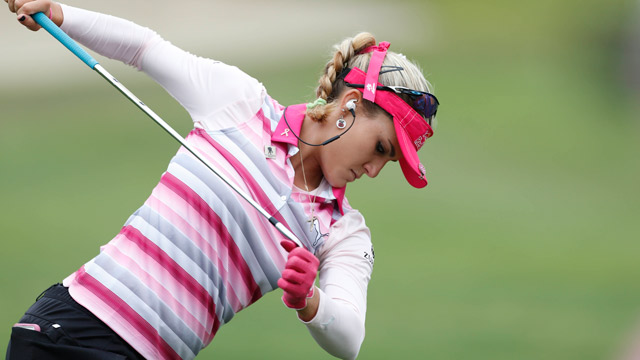NEWS
3 things to make sure to include when building a golf fitness routine
By Frank Mantua
Published on

There was a time not long ago when professional golfers never thought being physically fit benefited their golf game. In fact, the prevailing thought was that working out and lifting weights could be bad for your golf swing.
Obviously, all that has changed.
Nowadays, most golfers, if not all players on the PGA TOUR have a fitness regimen. Those who don’t, are ignoring an important part of their preparations.
Over forty years ago, the great Gary Player was stressing the importance of fitness to the golfer. It may have taken a while for everyone to get on board, but it has happened. You now see a fitness trailer at every PGA TOUR event and golfers that look like athletes that could play any sport.
The golf fitness revolution is not limited to professional golfers; many young players now realize that being in shape is not only great for your health but can also lead to lower scores on the golf course. Most high school and most college programs now have a fitness program for their players. Here are a couple of basic concepts from some of the best programs to get you started.
Stretching
Remember golf is a sport! You wouldn’t run from the car, grab the basketball and jump right into the middle of the game, you’ve been taught to stretch first. This is the same for golf.
The best place to stretch is on the driving range, but that’s not always possible because some courses don’t have a range or you may not have time.
First thing is to loosen up your larger muscles. This means your upper body, trunk, and legs, but also concentrate on your wrists and hands. This takes place before you even pick up a golf club. A lot of the same stretches that apply to other sports are helpful in golf. Use these same stretches to loosen up and really concentrate on your core muscles around your torso. Don’t rush it. It should take at least 10 minutes. If you need assistance developing a specific stretching routine, speak with your coach or instructor.
If you have the opportunity to hit some balls, start with the wedges and take half swings. Hit about ten easy wedges before you make your way through the bag to the longer clubs. A weighted warm-up club is a nice bonus if you have one.
Cardio Training
Cardio training is important to maintain your endurance. You need to be prepared for the day your coach says that you have to get in 36 holes today. Many times performing well on the last 9 holes on these long days comes down to fitness, not talent.
Walking 18 holes of golf is good for you, but add a little extra cardio to your workout (ex. running on the treadmill or using an elliptical machine) for that extra help to your heart. This will not only help with your fitness, but it will also strengthen your legs and keep them fresh while walking in a tournament. If you have any questions, ask your physical education teacher or coach to help you design a workout that is golf specific.
Walk when you play golf every time, not only for the exercise but to get a feel and pace for the game. You will be required to walk in high school, college, and beyond. Many times in college golf tournaments, players walk 36 holes in one day. Coaches believe that new players aren’t physically ready their Freshman year for the walking that is required to play college golf. The more rounds you walk, the better shape you’ll be in, and the better you will play.
This will pay off especially late in your rounds of golf and help you finish strong on the last few holes.
Weight Training
As mentioned earlier, years ago people thought that weight training and golf were a bad combination. Tiger Woods and a lot of other players have changed that stereotype. It is now known that weight training is actually beneficial to your game. Training your golf muscles will lead to better fitness and in many cases will add distance to your shots.
Look for exercises that strengthen your core and torso, including moves where you twist from the waist and bend at the hips. The golfer’s goal is not bulk. The goal is to develop lean and toned muscles. More repetitions, at least 12 to 15, with lighter weights will get you strong, but also keep you lean.
With lower weights, there is less risk of injury or losing your flexibility. Many golfers nowadays don’t even pick up a weight. Exercise bands and weighted balls are used for most golf exercises. These golf specific exercises are not only excellent for working your golf muscles, but they are better for the body than using heavy weights.
Fitness is a serious subject that goes far beyond the golf course. The benefits will not only help your golf game but also help you feel better in general. Remember the most important part is consistency. You have to develop and maintain your routine, walk each time you play, and be serious about your fitness. If you exercise over time and keep working at your swing, not only will your scores go down, but even more importantly you’ll feel great.
Article Prepared by Frank Mantua, PGA Professional, Director of Golf US Golf Camps - The Ultimate Junior Golf Camp Experience info@USGolfCamps.com
